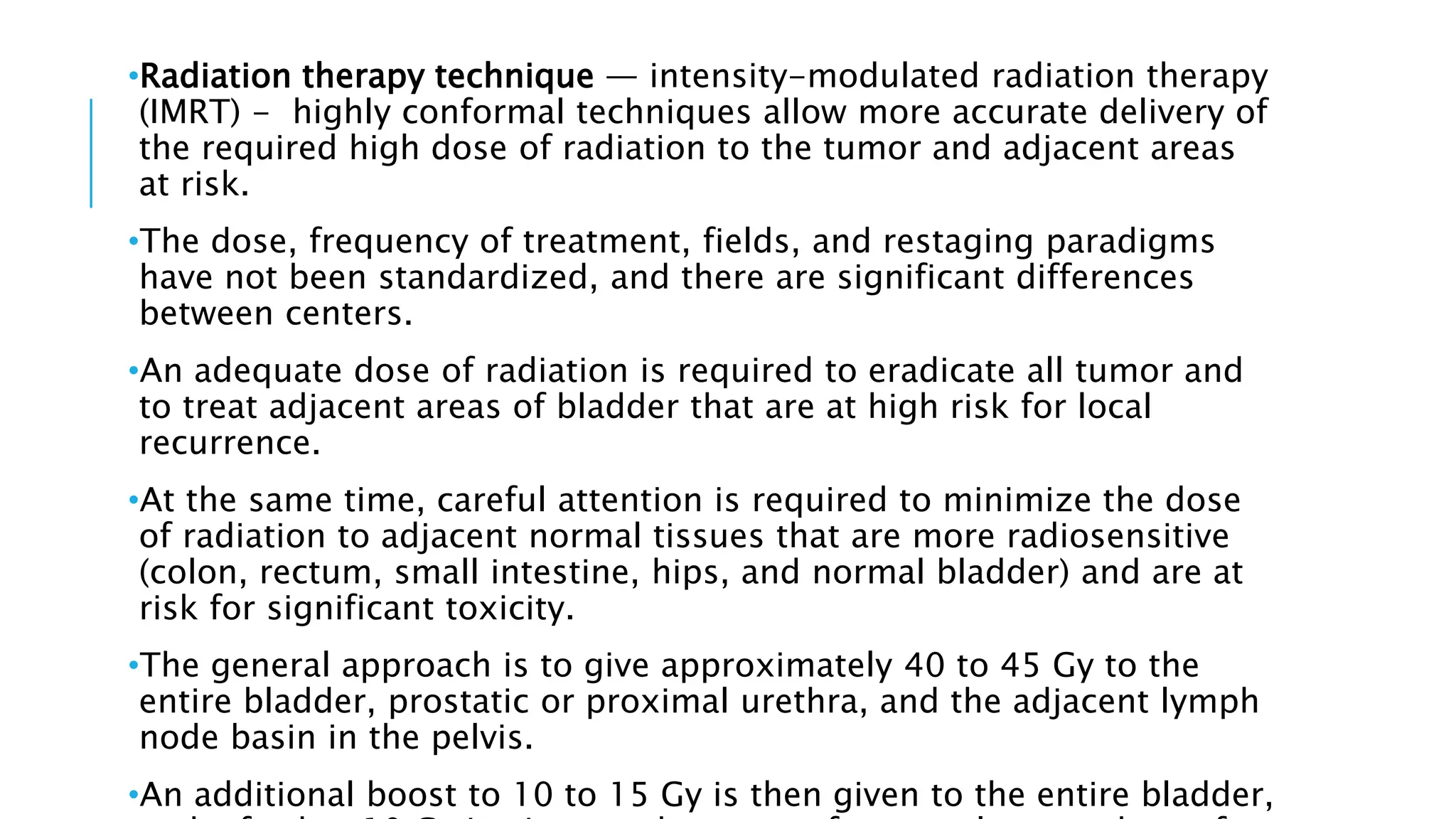This document discusses bladder preservation as an alternative to radical cystectomy for muscle-invasive bladder cancer. It describes trimodality therapy (TMT) involving maximal transurethral resection of bladder tumor (TURBT), radiation therapy with concurrent chemotherapy. Observational studies have found no significant difference in survival outcomes between TMT and radical cystectomy. Patient selection factors for TMT include clinical T2-T3a disease, absence of hydronephrosis or extensive carcinoma in situ. Concurrent chemoradiation typically involves cisplatin-based chemotherapy with 40-45Gy radiation to the bladder and pelvis, followed by a boost to the bladder. Follow up involves frequent cystoscopy and urine cytology.












































